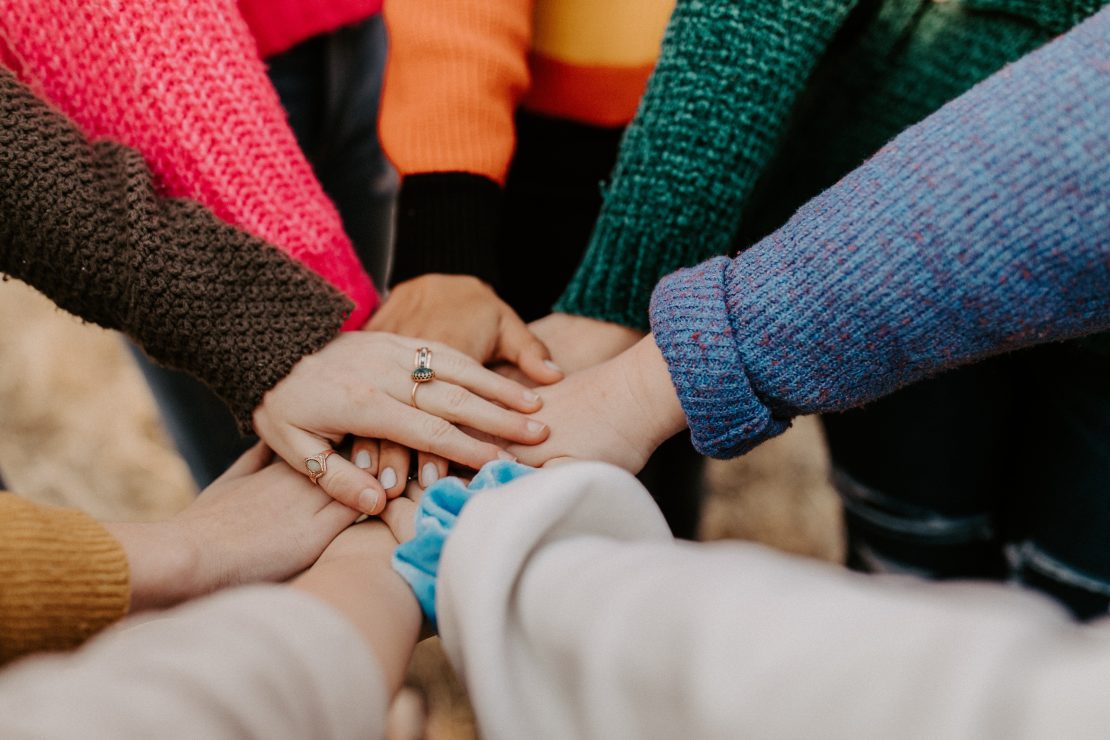Sustainability is rooted in our everyday actions, including how we support one another

Photo by Hannah Busing via Unsplash.
Mutual aid is a social practice based on flow of goods and services within a community. Mutual aid is not charity, nor is it based on a direct trading model. Instead, it ensures people are getting what they need by sharing with one another what they are able to.
The idea behind it is simple: because we care, we help each other.
If you’ve delivered a meal to a sick friend expecting nothing in return, provided free childcare for a family member, or loaned a loved one some money when they were short on cash, you’ve practiced mutual aid — all that was missing was the label.
Dr. Joel Izlar, American community worker and social scientist, explains that mutual aid is especially relevant during crises, as we saw during the pandemic. But what does that mean for mutual aid networks in the context of an ongoing climate crisis?
According to Olivia Walters, a geography and environmental studies student at UVic, living within a long-term mutual aid community model (one built to last, not in response to dire need) is a way to practice sustainability — and it’s less intimidating to adopt than you might have previously thought.
In the midst of an ecological crisis too devastating to conceptualize for most, feeling empowered to take individual action can feel daunting and trivial and lead to feelings of action paralysis or apathy. Welcoming a mutual aid approach is a way to resist those feelings by sharing in a sustainable solution with those around us.
“It’s really hard to exist in a world where we’re living in late-stage capitalism, oftentimes people just can’t make ends meet,” says Walters. “I think [mutual aid] can be a way to encourage a sharing economy, a trade economy.”
For her friend group, mutual aid looks like offering to mend a friend’s clothes if you have that skill, bringing a meal to your friend’s house when they are overwhelmed or busy, or even lending items to your friend so they don’t have to purchase those things for one time use.
In this way, Walters and her social circle are finding alternatives to fast fashion consumption and material overconsumption, which perpetuate climate crises, and showing up to support one another mentally and emotionally by providing necessities, like meals.
According to Walters, donating to a community kitchen or pantry is another way to extend your mutual aid beyond the reciprocity of your social circle.
“[Mutual aid] can contribute to stronger social relationships, and a stronger collective well-being,” Walters says.
Izlar defines mutual aid as “the building and continuing of new social relations where people give what they can and get what they need, outside of unjust systems of power.” This is fitting, given that an intentional approach to the practice has long been used by marginalized groups, like communities of colour and queer communities, who have historically and systemically been neglected by governments and organizations.
The idea of mutual aid became popularized beyond these communities at the start of the COVID-19 pandemic, when hospitals grew full, grocery stores became viral breeding grounds, and more and more folks were finding their most basic needs unsupported by the government and healthcare systems. As such, people began relying on one another to show up supportively in the name of mutual aid.
“Informal childcare collectives, transgender support groups, and other ad-hoc organizations operate without the top-down leadership or philanthropic funding that most charities depend on,” says an article from the New York Times on mutual aid.
Mutual aid networks, like the Anarchist Network of Vancouver Island (ANVI), volunteer with self-managed, direct action groups, and also practice direct action through protest organization. Direct action, according to ANVI, means actively expressing dissent and/or taking action to solve a problem.
Also according to a spokesperson from ANVI, “anarchists extend mutual aid beyond the human realm to our relationship with the ecology.”This means prioritizing harmony between ourselves and our environments in our economies and ways of living, to avoid harming the natural world.
The spokesperson says that oftentimes, mutual aid manifests during the organization and planning of protests, which is an act of mutual aid in itself since the protests aren’t organized by NGOs or political parties.
An article from the Journal of the Society for Social Work and Research emphasizes the importance of breaking out of the giver/receiver binary to engage in mutual aid, and instead embracing mutuality.
As opposed to charity, which is geared toward helping the less fortunate, mutual aid is a way of life that challenges the individualist norms of an industrial, late-stage capitalist society by prioritizing community care and radical support. Mutual aid connects us to one another and the world around us, and thus, it is inherently self-sustaining.
Izlar says that because “we live in an unjust society that divides us from ourselves and one another … it is often better to take our lives into our own hands and solve our [own] problems because we are all in this together.”
In the face of ecological disaster, engaging in a mutual aid practice is one small way you can meaningfully resist mechanisms like overconsumption and individualism which perpetuate the climate crisis.
Your community, on a large scale or small, will be stronger for it.








